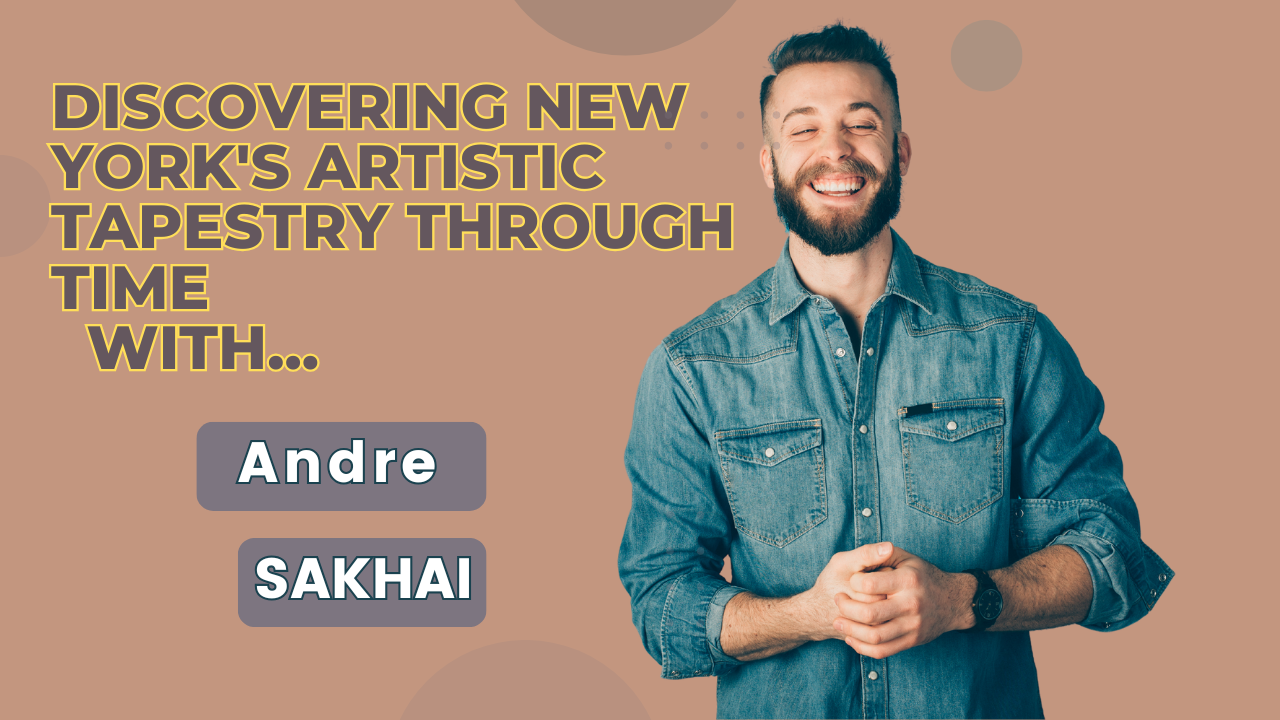New York City, a bustling hub of creativity and culture, has long been a beacon for artists and art lovers alike. This vibrant metropolis is not just a backdrop but a protagonist in the story of art’s evolution. From its humble beginnings to becoming a global art capital, New York’s artistic history is as diverse and dynamic as the city itself. Guided by the insights of acclaimed art dealer Andre Sakhai, we’ll explore the intricate tapestry that makes up New York’s art scene, offering a glimpse into the past, present, and future of this artistic powerhouse.
The Birth of American Art in New York
New York’s artistic landscape began to take shape in the early 19th century. It was during this time that the city started to emerge as a pivotal center for American art. Artists flocked to New York, drawn by the promise of inspiration and opportunity. The establishment of the National Academy of Design in 1825 marked a significant milestone, providing a platform for artists to showcase their work and collaborate. This period was characterized by a focus on realism and landscapes, reflecting the nation’s growing identity and pride.
The Hudson River School, an influential art movement, played a crucial role in shaping New York’s early art scene. Its artists, inspired by the breathtaking landscapes of the Hudson River Valley, created works that celebrated the beauty of nature. These paintings captured the American spirit and were instrumental in establishing New York as a center for artistic excellence. The city’s burgeoning art scene attracted attention and set the stage for future artistic endeavors.
During the latter half of the 19th century, New York continued to evolve as an artistic powerhouse. The influx of European artists and immigrants brought new perspectives and techniques, enriching the city’s creative landscape. This period saw the rise of impressionism and modernism, with artists experimenting with new forms and styles. New York’s art scene was beginning to thrive, laying the foundation for the cultural explosion that would follow.
New York’s Golden Age of Art
The early 20th century marked a golden age for New York’s art scene. The city became a melting pot of creativity, attracting artists from all over the world. This era was defined by innovation and experimentation, with artists pushing the boundaries of traditional art forms. The Armory Show of 1913, held in New York, was a groundbreaking event that introduced modern art to America. It featured works by artists such as Marcel Duchamp and Pablo Picasso, challenging conventional ideas and paving the way for contemporary art movements.
New York’s museums and galleries played a vital role in fostering this cultural renaissance. Institutions like the Museum of Modern Art (MoMA) and the Whitney Museum of American Art became beacons of modernity, showcasing cutting-edge works and supporting emerging artists. These venues provided a platform for experimentation and dialogue, encouraging artists to explore new ideas and push the limits of their creativity.
The city’s vibrant art scene was further enriched by the contributions of influential figures like Andre Sakhai. Known for his discerning eye and passion for art, Sakhai played a pivotal role in promoting and supporting artists during this time. His expertise and dedication helped shape the art market, making New York a thriving cultural capital. Sakhai’s influence extended beyond the city’s borders, cementing New York’s status as a global leader in the art world.
The Rise of Abstract Expressionism
The post-World War II era saw the emergence of abstract expressionism, a revolutionary movement that would redefine the art world. New York became the epicenter of this movement, with artists like Jackson Pollock, Mark Rothko, and Willem de Kooning leading the charge. Abstract expressionism rejected traditional techniques and embraced spontaneity, emotion, and abstraction. It was a powerful response to the changing world, capturing the complexities of modern life.
Andre Sakhai recognized the significance of abstract expressionism and played a crucial role in its proliferation. His keen understanding of the movement’s potential helped elevate it to international prominence. Sakhai’s support of artists and collectors facilitated the exchange of ideas and fostered an environment of creativity and innovation. Through his efforts, New York solidified its position as a key player in the global art scene.
The impact of abstract expressionism on New York’s art landscape cannot be overstated. It challenged traditional notions of art and paved the way for subsequent movements like minimalism and pop art. The city’s museums and galleries became incubators for creativity, attracting artists and collectors from around the world. New York’s reputation as a cultural capital was firmly established, and its influence continues to resonate today.
The Evolution of Contemporary Art in New York
As the 20th century progressed, New York’s art scene continued to evolve, reflecting the changing cultural landscape. The city became a breeding ground for new movements and ideas, with artists constantly pushing the boundaries of creativity. Contemporary art flourished, with artists exploring diverse mediums and concepts. The city’s dynamic energy and diverse population provided a fertile ground for artistic expression.
The influence of technology and globalization further shaped the contemporary art scene in New York. Artists began incorporating new media, such as video, digital art, and installations, into their work. This shift opened up new possibilities and challenged traditional definitions of art. New York’s galleries and institutions embraced these changes, providing a platform for artists to experiment and engage with audiences in innovative ways.
The rise of street art and graffiti also played a significant role in shaping New York’s contemporary art landscape. Artists like Jean-Michel Basquiat and Keith Haring brought their bold and provocative works to the streets, blurring the lines between high and low art. This democratization of art challenged the establishment and sparked conversations about accessibility and inclusivity. Today, street art remains an integral part of New York’s artistic identity, reflecting the city’s vibrant and diverse culture.
Andre Sakhai’s Legacy in New York’s Art World
Throughout New York’s artistic evolution, Andre Sakhai’s contributions have been invaluable. His passion for art, coupled with his business acumen, has left an indelible mark on the city’s art scene. Sakhai’s dedication to promoting emerging artists and supporting established ones has helped shape the trajectory of New York’s art world.
Sakhai’s influence extends beyond the commercial aspect of art. He has been a champion of cultural preservation and education, working tirelessly to ensure that future generations have access to the rich artistic heritage of New York. Through his philanthropic efforts, Sakhai has supported museums, galleries, and educational programs, fostering a deeper appreciation for art and its impact on society.
Today, Andre Sakhai’s legacy lives on through the countless artists and collectors he has inspired. His vision and commitment continue to shape New York’s art scene, ensuring that it remains a vibrant and dynamic hub of creativity. Sakhai’s contributions have not only elevated the city’s cultural standing but have also enriched the global art community, leaving a lasting impact on the world of art.
Conclusion
New York City’s artistic tapestry is a testament to the power of creativity and innovation. From its early beginnings to the present day, the city’s art scene has continuously evolved, reflecting the changing cultural landscape. Guided by the insights of Andre Sakhai, we have explored the rich history of art in New York, uncovering the stories and movements that have shaped its identity.
For art enthusiasts and New York tourists, this exploration offers a deeper understanding of the city’s artistic heritage. It invites you to immerse yourself in the vibrant world of New York art, where creativity knows no bounds. Whether you’re visiting museums, galleries, or exploring the city’s streets, you’ll find inspiration at every turn.
If you’re eager to learn more about New York’s art scene, consider visiting the city’s renowned museums and galleries. They offer a wealth of exhibitions and programs that cater to all interests and ages. Additionally, engaging with local artists and attending art events can provide unique insights and opportunities for connection.
In conclusion, New York’s artistic tapestry is a reflection of its dynamic and diverse culture. It is a testament to the power of art to transcend boundaries and bring people together. By exploring the city’s art scene, you become part of a vibrant community that celebrates creativity and innovation.










